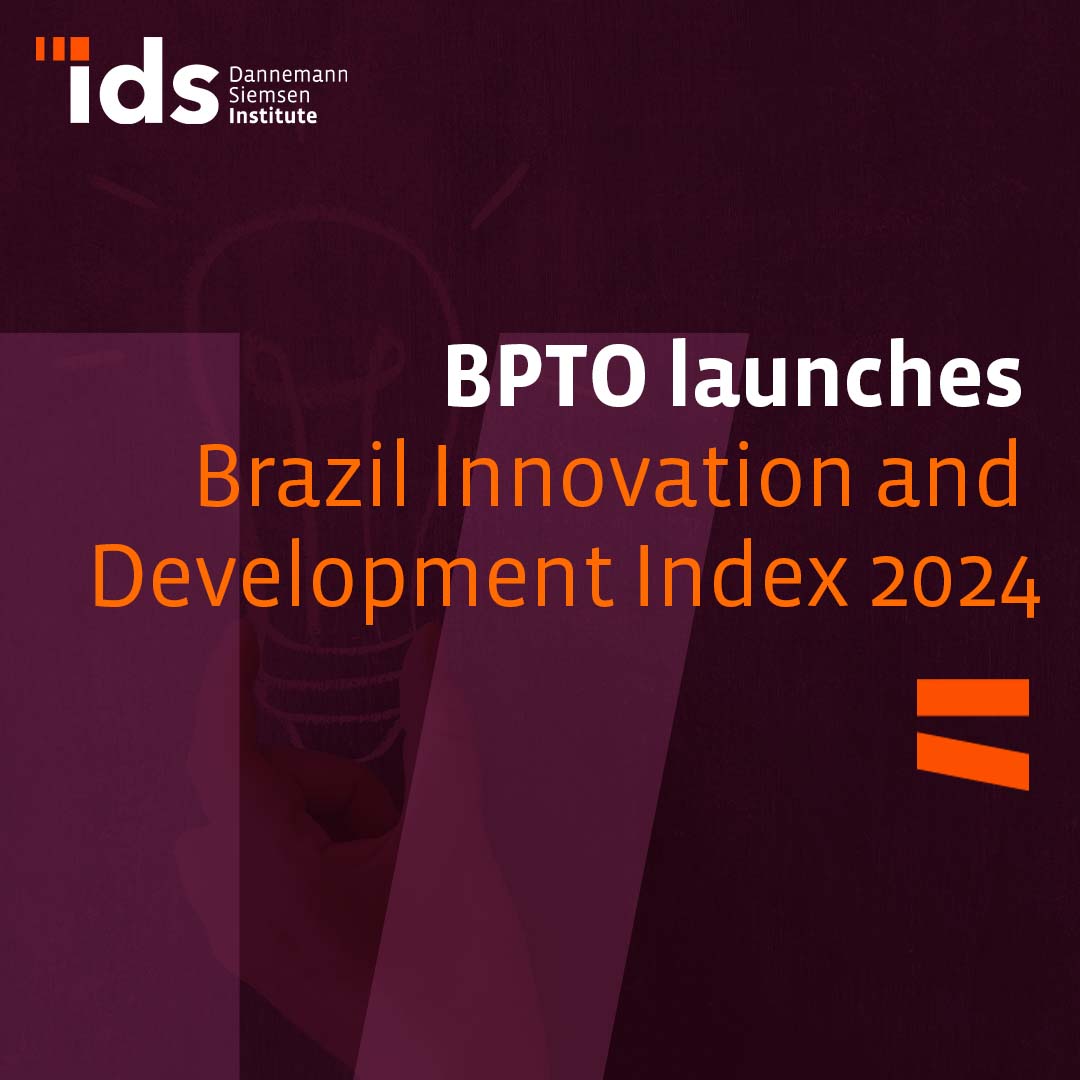22 de agosto de 2024
Share
BPTO launches Brazil Innovation and Development Index 2024
On 5 August, the Brazilian Patent and Trademark Office (BPTO) published the first edition of its Brazil Innovation and Development Index (IBID). According to the BPTO, the document constitutes a complete and current map of innovation in Brazil, revealing the performance of local science, technology and innovation (ST&I) ecosystems from different perspectives. Among its objectives is to portray the innovation scenario in Brazil by means of a synthetic official reference indicator, highlighting potential and challenges from a regional perspective; as well as providing detailed metrics on the innovation performance of the federation units (FUs) and regions of Brazil. It also aims to identify national and regional innovation leaders, classifying the FUs based on criteria that include the results of the innovation process and the factors that influence it.
The report is divided into 4 main axes: the overview; the overview by theme; the geographical overview and the annexes. Firstly, the overview provides a broad picture of innovation in Brazil, identifying the national/regional leaders and the main challenges and potential of the states. Here, the IBID highlights the leadership of the states of São Paulo, Santa Catarina, Paraná, Rio de Janeiro and Rio Grande do Sul as the most innovative economies in Brazil.
It then notes that the Southeast and South concentrate innovation in the country, since seven of the top eight positions in the overall ranking are occupied by states from these regions. In this respect, although the Northeast region was at the bottom of the overall ranking, the Northeastern economies performed better than expected in terms of innovation in relation to income level. Thus, the leaders in innovation by region are: São Paulo (1st Southeast and national champion); Santa Catarina (1st South and 2nd overall ranking); Federal District (1st Midwest and 7th overall ranking); Rio Grande do Norte (1st Northeast and 11th overall ranking); Tocantins (1st North and 19th overall ranking).
In the second part, the aim is to provide a multidimensional index that consolidates 74 indicators into 7 pillars and 21 dimensions, allowing for a general comparison and that of each area between the country’s macro-regions and states. According to the IBID, this assessment makes it possible, on the one hand, to highlight the areas with the greatest gaps in relation to national standards and, on the other, to identify the potential and solutions experienced by other territories.
To this end, the seven pillars of innovation considered are: institutions, human capital, infrastructure, economy, business, knowledge and technology and creative economy. For example, the knowledge and technology pillar covers the variables that are traditionally considered to be the result of inventions and/or innovations, referring to the creation of knowledge and technological diffusion, and including indicators that measure the result and impact of inventive and innovative activities, such as patents, technology transfer, start-ups and scientific production. The creative economy criterion assesses the role of creativity in innovation, signaling the capacity to create disruptive businesses, including indicators for brands and other IP assets related to adding value and creativity to an economy, as well as the digital environment that drives it.
The third part brings together the previous analysis into regions, based on the average weighted score, by GDP per capita, of the IBID of all the FUs that make up a given region. From this, it emerged that the Southeast is the most innovative region in Brazil, followed by the South, which has three states among the five most innovative in the country. The south-east also leads in all innovation pillars, except for ‘Institutions’, where the south is in first place. On the other hand, the last-placed region in the IBID is the North, which concentrates the largest number of economies (4) among those with the worst overall ranking.
Finally, the last part of the index is dedicated to explaining the methodology used to construct the document, in this case the same one used by the World Intellectual Property Organization (WIPO) in its Global Innovation Index. It also explains the methods used to calculate the basic indices, includes a glossary of sources for the indicators analyzed and the bibliographical references used.
The BPTO index can be accessed via the link: Índice Brasil de Inovação e Desenvolvimento 2024
Note: For quick release, this English version is provided by automated translation without human review.
